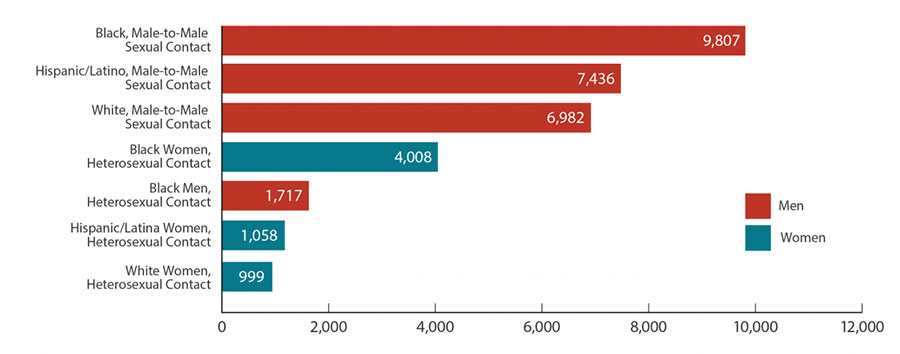Letters from the Director: Women and Girls’ Health and the HIV AIDS Epidemic
March 10 was National Women and Girls HIV/AIDS Awareness Day (NWGHAAD). The NIH Office of AIDS Research (OAR) joined the NIH Office of Research on Women’s Health (ORWH), health care professionals and other local, state, federal, and national organizations to help raise awareness and show our support to women and girls who are at risk for or living with HIV. This year’s theme, "HIV Prevention Starts With Me," underscored the important role women can play in protecting their health, partners, friends, and family against HIV.
Currently, more than 1 million people in the U.S. are living with HIV. About 1 in 7 (14%) are unaware of infection1 and nearly 1 in 4 are women2. In 2017, women accounted for 19% of total new HIV diagnoses (7,312 of 38,281) in the United States. The burden of disease remains disproportionally higher among African American women compared to other races/ethnicities. Among all women diagnosed with HIV in 2017, 60% (4,395) were African American3.

Source: CDC, HIV in the United States and Dependent Areas, Jan. 2019.
Tremendous progress has been made in the prevention of new HIV infections using Pre-exposure prophylaxis (PrEP) and/or Post-exposure prophylaxis (PEP), and antiretroviral therapies (ARTs) has enabled people with HIV to manage their health, but no cure for HIV is yet available.
Women around the world remain vulnerable to HIV infection, including African-American and Hispanic women in the U.S. Sexually active women can acquire HIV regardless of race, ethnicity, age, or sexual orientation and continue to face unique challenges to preventing infection including:
- The potential to transmit HIV to their babies during pregnancy, at birth and through breastfeeding.
- A sexually transmitted infection (STI) raises a woman's risk for contracting HIV.
- Being more likely to experience fear, violence, stigma, or abandonment when using HIV prevention measures in some cultures.
- Being at risk for victimization (sexual assault and abuse.)
The OAR is prepared and looks forward to supporting the new national initiative Ending the HIV Epidemic: A Plan for America. The goal is to end the HIV epidemic in the United States by 2030 through an effort that seeks to reduce new infections by 75 percent within five years and by 90 percent within 10 years. The Plan for America requires a coordinated, phased approach across government agencies to focus specific resources, starting in those regions of the US with the highest incidence of new infections. Early planning has identified 48 counties across the US, Washington, DC and San Juan, Puerto Rico4, as well as seven states reporting increased new infections in some rural areas, where new efforts to reduce infections are to begin.
We must continue to work together to educate and assist communities nationwide to value women’s health. We now have an opportunity to join efforts aimed at providing essential tools and information that can protect women and girls from HIV and support longer and healthier lives.
Maureen M. Goodenow, Ph.D.
Associate Director for AIDS Research and
Director, Office of AIDS Research
National Institutes of Health
1 hiv.gov. Updated February 2019. “U.S. Statistics, Fast Facts.” Available at https://www.hiv.gov/hiv-basics/overview/data-and-trends/statistics
2 Office of Women’s Health. Updated March 2019. “About National Women and Girls HIV/AIDS Awareness Day.” Available at https://www.womenshealth.gov/nwghaad
3 Centers for Disease Control and Prevention. Updated November 2018. “HIV Surveillance report.” Available at https://web.archive.org/web/20240203235145/https://www.cdc.gov/hiv/pdf/library/reports/surveillance/cdc-hiv-surveillance-report-2017-vol-29.pdf
4 hiv.gov. Updated February 2019. “Ending the HIV Epidemic: A Plan for America – Counties, Territories, and States.” Available at https://files.hiv.gov/s3fs-public/Ending-the-HIV-Epidemic-Counties-and-Territories.pdf
This page last reviewed on July 17, 2025

